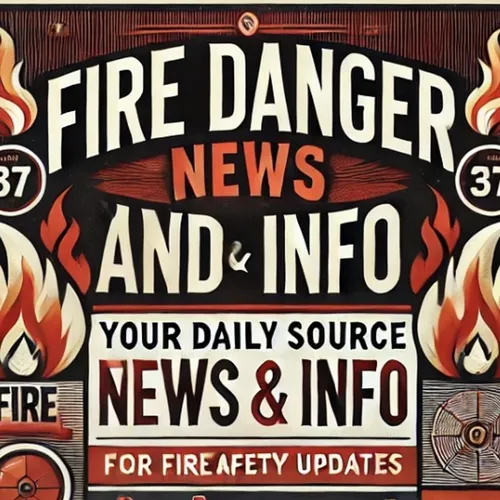"Elevated Fire Danger Sweeps the Western US Amid Persistent Heat and Drought"
- Author
- Quiet. Please
- Published
- Sat 09 Aug 2025
- Episode Link
- https://www.spreaker.com/episode/elevated-fire-danger-sweeps-the-western-us-amid-persistent-heat-and-drought--67314575
The United States is facing an elevated fire danger across much of the West as August brings persistent heat, dry conditions, and the threat of lightning-sparked wildfires. According to the United States Department of Agriculture’s Forest Service, nearly all national forests in the Pacific Northwest are currently at high to extreme fire danger except for the Siuslaw National Forest in Oregon. Since the end of May, fire managers in this region have had to respond to more than fifty large fires spanning just over two hundred thousand acres, and fire weather forecasters warn residents to anticipate more significant fires throughout August and September unless sustained rain or cooler temperatures arrive. As many as fifteen national forests have activated campfire restrictions to help prevent additional human-caused ignitions. The National Interagency Fire Center reports that so far this year, an overwhelming ninety-three percent of all wildfires nationally have been started by people, underscoring the importance of prevention efforts.
Specific states are experiencing especially critical conditions. In California, for example, the Gifford Fire in Central California’s Los Padres National Forest has consumed more than eighty-three thousand acres in less than a week and is only seven percent contained, according to ABC News. Over eight hundred structures are threatened, and two additional fires, the Rosa Fire in Riverside County and the Gold Fire in San Bernardino County, have also prompted evacuations and remain largely uncontained. Officials caution that warmer weather through the week could intensify fire activity even further. The National Weather Service has warned that inland regions of Northern California are at pronounced risk, especially in areas far from the moderating influence of the coast, as grass and brush rapidly dry out amid low humidity and strong afternoon winds.
Elsewhere in the Western United States, the National Integrated Drought Information System highlights that hot, dry conditions are fueling major active fires, including the Dragon Bravo Fire in Arizona’s Grand Canyon National Park, which has burned over one hundred thirty thousand acres, and the Bear Creek Fire Group in east-central Alaska, at more than seventy-three thousand acres. Fire danger is also forecast to be critical over the coming days in parts of Wyoming, Colorado, Utah, and Nevada, with winds and low humidity driving concerns. In Oregon, a Fire Weather Watch has been issued for gusty winds and low humidity on August ninth, signaling the persistence of dangerous conditions even as the season advances.
National seasonal outlooks from the National Interagency Fire Center and its predictive services suggest the overall burned acreage this year is below the ten-year average, but the number of actual wildfires is above normal. The pattern emerging across the US is a rapid transition from a wet spring that grew abundant fuels to intense summer heat, which dries these fuels and creates highly flammable landscapes. This combination is making 2025 a notably active year for fire danger, particularly as drought intensifies and communities remain vulnerable to both naturally sparked and human-caused fires.
Some great Deals https://amzn.to/49SJ3Qs
For more check out http://www.quietplease.ai
